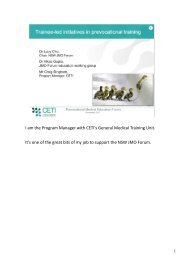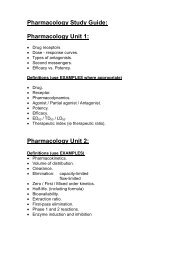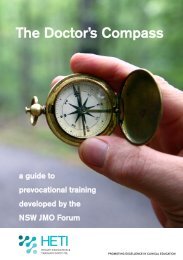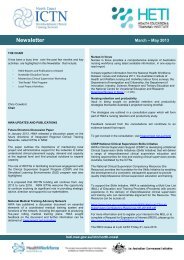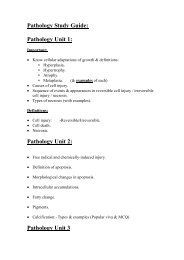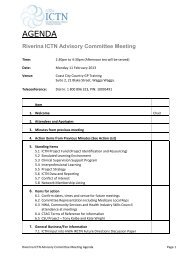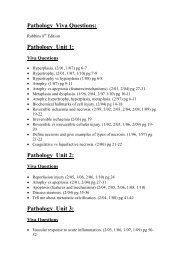a handbook for supervising allied health professionals - HETI - NSW ...
a handbook for supervising allied health professionals - HETI - NSW ...
a handbook for supervising allied health professionals - HETI - NSW ...
You also want an ePaper? Increase the reach of your titles
YUMPU automatically turns print PDFs into web optimized ePapers that Google loves.
THE SUPERGUIDE<br />
Managing a clinician in difficulty<br />
Any of the challenging situations described on the previous page, and others, may<br />
become a “clinician in difficulty” — somebody who is not progressing as they should<br />
and potentially placing themselves and others at risk.<br />
68<br />
A clinician in difficulty may be supported by both the supervisor and operational line<br />
manager. Clear processes defining the role of each person are required in the case<br />
where the line manager is not the clinical supervisor. Where there are specific clinical<br />
practice issues, a suitably qualified senior clinician from that discipline should be<br />
involved in the process.<br />
It is important to recognise that, in the case of less experienced staff, being a junior<br />
<strong>allied</strong> <strong>health</strong> professional with limited experience can be challenging. Most problems<br />
can be resolved if they are appropriately identified and managed. The general approach<br />
to dealing with clinicians in difficulty rests on three principles:<br />
1 Patient safety should always be the primary consideration<br />
2 Clinicians in difficulty require ongoing supervision and support<br />
3 Prevention, early recognition and early intervention are always preferred over a<br />
punitive approach in dealing with identified issues.<br />
The saying “prevention is better than a cure” applies here. Being astute and responding<br />
to issues early prevents a situation escalating to a major incident.<br />
When a supervisor encounters a clinician in difficulty, he/she should seek advice without<br />
delay. Experience has shown that simple interventions can be very effective if made<br />
early enough. Seek advice early from your line manager, other senior colleagues or<br />
work<strong>for</strong>ce services department. Other units such as the employee assistant program and<br />
professional practice unit may also be of assistance to both supervisors and supervisees.<br />
Example: Having a “crucial conversation” with a supervisee<br />
You have noticed that a supervisee is having difficulty with workload management. You<br />
know this because you have noticed that he/she is frequently staying back to get work<br />
done, is often working though lunch and looks exhausted and overwhelmed. You are also<br />
taking note of the issues the supervisee brings to supervision and you are finding that the<br />
supervisee is taking on too much extra work. You suspect that the supervisee is doing<br />
“above and beyond” the work that is required because he/she does not understand their<br />
role and is there<strong>for</strong>e anxious about per<strong>for</strong>mance and unsure about boundaries. You decide<br />
to address this in the next supervision session. This entails having a ‘crucial conversation’<br />
with the supervisee.



